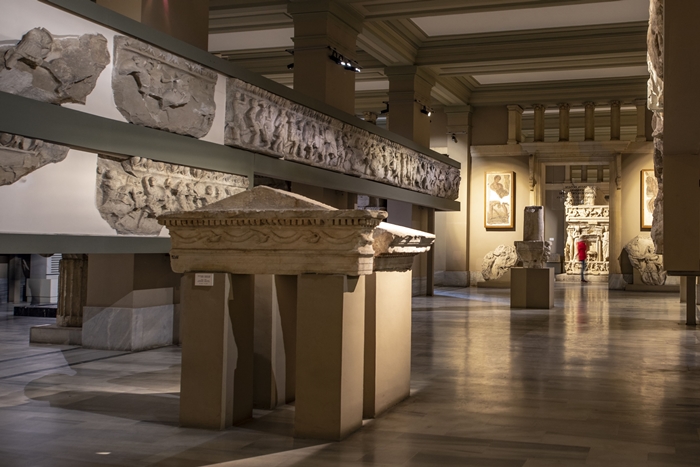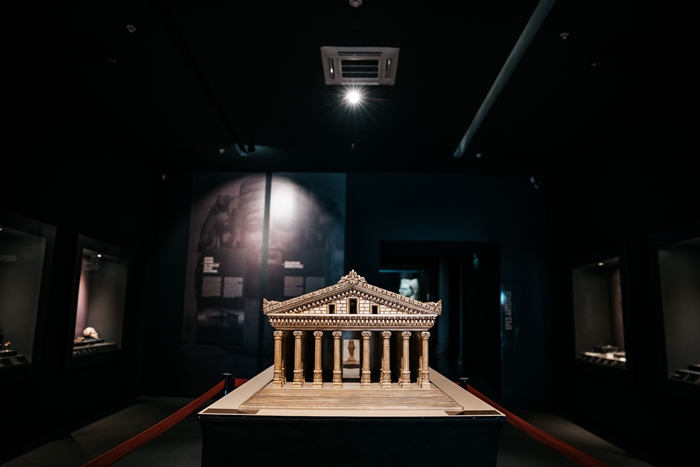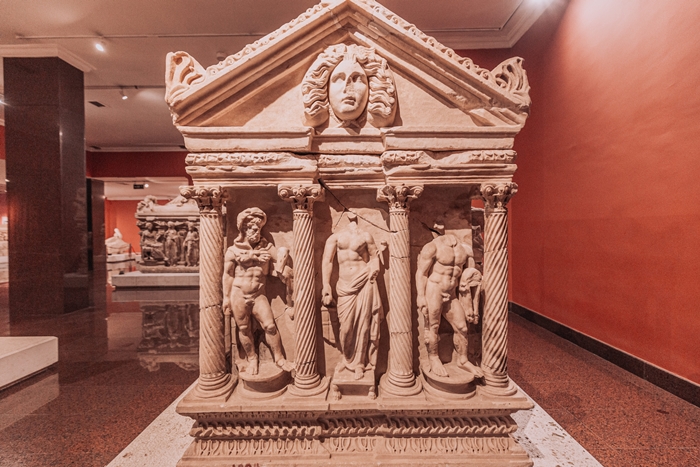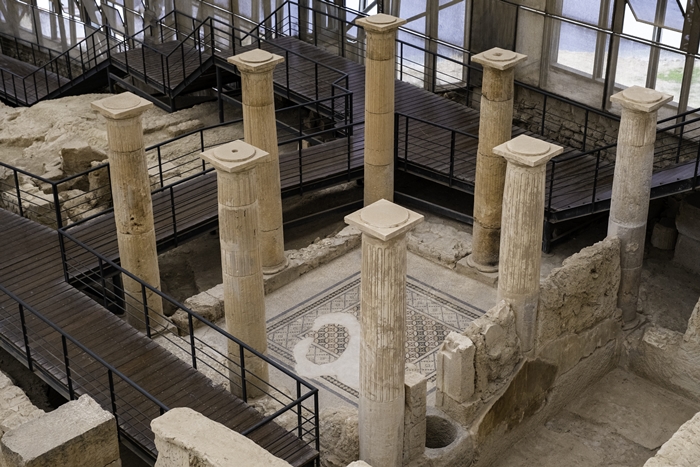Türkiye is currently experiencing warm autumn days, making it one of the best times to travel in the country. From the Aegean coast and the Turkish Riviera, where it is almost still summer, to the scenic east, this rich geography offers much to discover and Türkiye’s long history is amply illustrated by the country’s 22 UNESCO World Heritage Sites. In addition, Türkiye offers extraordinary museums—museums that symbolize the cities in which they live and that shed light on the storied history of Anatolia.
İstanbul Archaeology Museums: Where history becomes alive
With the artefacts it houses, İstanbul Archaeology Museums, located on the grounds of Topkapı Palace, is one of the wealthiest archaeology museums in the world. It holds more than one million artefacts belonging to the civilisations within the borders of the late Ottoman Empire. The complex’s main building, the Archaeology Museum, is one of the few buildings in the world built mainly as a museum. This excellent museum holds the Brankhit statues of the Didyma-Milet Sacred Road from the Archaic Age to the end of the Roman Age, the Kore and Kouros (young girl and boy) statues, the Lion Statue of the Halicarnassus Mausoleum, the Head of Aphrodite of the famous Pergamon Zeus Altar, Alexander the Great portrait, the sculpture works discovered in Aphrodisias, Ephesos and Miletos, the three great marble cities of the Roman period. The museum is also home to numerous artefacts unearthed during excavations led by Osman Hamdi Bey, the founder of museology in Türkiye and the museum’s first director in the 19th century. One of them is the world-famous Alexander Sarcophagus, unearthed in the Sidon King Necropolis during excavations conducted by Osman Hamdi Bey between 1887 and 1888. Rest in the lovely cafe of this eye-catching museum, which overlooks Gülhane Park, and enjoy the elegance of its building, one of İstanbul’s most beautiful and spectacular examples of Neo-Classical architecture.
A Museum Showcasing a Global Heritage: Ephesus
A UNESCO World Heritage Site, the ancient city of Ephesus in İzmir’s Selçuk district is on every traveler’s itinerary. The area, continuously inhabited for about 9,000 years, has witnessed the Hellenistic, Roman, Eastern Roman, Principalities and Ottoman eras. And the magnificent Ephesus Museum is one of the most important museums in Türkiye, with a collection that includes ancient treasures such as sculptures of Artemis of Ephesus, Priapos, Isis and the Egyptian priest, as well as statues of Eros with dolphins and Eros with rabbits, busts of Eros and Socrates, and depictions of other mythological gods. The Ephesus archaeological site has recently been on the agenda with excavation, restoration and renovation works within the scope of the “Heritage to the Future Eternal Ephesus Project” and every artifact unearthed from the site will increase the splendour of the museum. Additionally, the newly opened Ephesus Digital Experience Museum offers visitors the opportunity to experience the history of the ancient city of Ephesus in a digital environment, a unique journey in the virtual world of antiquity.
Journey into Anatolian History: Museum of Anatolian Civilizations
Ankara, the capital of Türkiye, is home to a very important museum: The Museum of Anatolian Civilizations, housed in two Ottoman buildings near the Ankara Castle. The museum complex, named “Museum of the Year in Europe” in 1997, chronologically exhibits the artifacts of the civilizations in Anatolia from the past to the present. The museum’s collection spans a number of periods, from the Hittites to the Phrygians, one of the greatest civilizations of Anatolia, and includes artifacts from the Palaeolithic, Chalcolithic and Ancient Bronze ages, and the Assyrian Trade Colonies, Old Hittite and Hittite Imperial ages, as well as from the Phrygian Kingdom, Late Hittite Kingdom and Urartian Kingdom. The Ankara Through the Ages and Classical Periods sections also feature artifacts excavated from the ancient city of Gordion, which was registered as Türkiye’s 21st heritage site on the UNESCO World Heritage List last month.
Jewel of the Turkish Riviera: Antalya Museum
One of the largest museums in Türkiye is in Antalya, the heart of the Turkish Riviera with 300 days of sunshine a year. Dedicated to the three ancient cultural regions of Lycia, Pamphylia and Pisidia that existed within the borders of Antalya, and featuring sculptures excavated from the ancient city of Perge, the Antalya Museum is a complex that proved its worth by winning the “Council of Europe Museum of the Year” award in 1988. The museum’s collection includes a number of important artifacts that have been returned to Türkiye from abroad. A total of 12 artifacts, including the statue of Septimius Severus from the ancient city of Bubon, two statue heads from Perge, and the mother goddess from Çatalhöyük, returned from the United States earlier this year, can now be seen in their homeland at the Antalya Museum.
Collections of beautiful mosaics: Gaziantep Zeugma Museum
Home to the ancient city of Zeugma, one of the largest and most populous cities of the Roman period, you can explore the excavated mosaics at the Zeugma Mosaic Museum, one of the largest mosaic museums in the world. The dramatic statue of Mars (Ares), the God of War, and the world-famous “Gypsy Girl Mosaic” are among the exhibited works in this splendid museum. ///nCa, 5 November 2023 (in cooperation with the Embassy to Türkiye to Turkmenistan)



